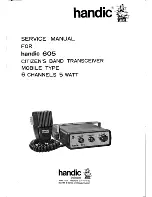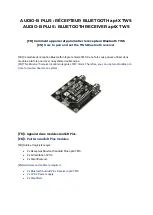
XMR User Manual 1.1
9
XMR Operation
Powering the XMR
The XMR does not have an internal power source, therefore providing that supply immediately
turns the unit on. While the power source can be set within operating range, it is recommended
that users not use a power source very close to either extreme. Once the power supply dips
below 7V, communication may not be possible with the XMR.
If the power supply is subject to power surges, it may be advisable to use a power supply with an
average voltage of 24 VDC to avoid damaging the internal circuitry of the XMR. Refer to the
for the corresponding appropriate ranges.
LED Indicators
The XMR’s enclosure allows visibility of its on/off status using an LED. It is to be used as an
indicator for when the device is initially powered. This same LED also pulses red in the event of a
self-test failure at start-up.
Behaviours
Flashing 4 Hz on power-up
Device powering up, performing self-test
Flashing 0.5 Hz after power-up
Self-test failure
Deployment of the XMR
The XMR contains GPS and Iridium antennas. Deploying the XMR requires the following:
An XMR with Iridium service activated (using IMEI provided by Xeos)
An external power source from 7 – 32 VDC capable of supplying max 1.5A
An external RS-232 serial device to communicate to the XMR
A suitable deployment environment
o
The top of the XMR must have as good a view of the full sky as possible.
Alongside a wall or tall obstruction will cause coverage to suffer.
The antenna surface must not be obstructed by metal or wood. Thick
amounts of other materials may also cause interference.
o
XMR should not be deployed near (less than 1 meter) other transmitters.
Содержание XMR Series
Страница 1: ...1 XMR User Manual Waterproof Iridium Data Transceiver Version 1 1 February 2021...
Страница 36: ...XMR User Manual 1 1 34 Appendix D Mechanical Drawings...
Страница 37: ...XMR User Manual 1 1 35...
Страница 38: ...XMR User Manual 1 1 36 Appendix E Cable Drawings A 05 090 XMR Power Communications Cable...










































